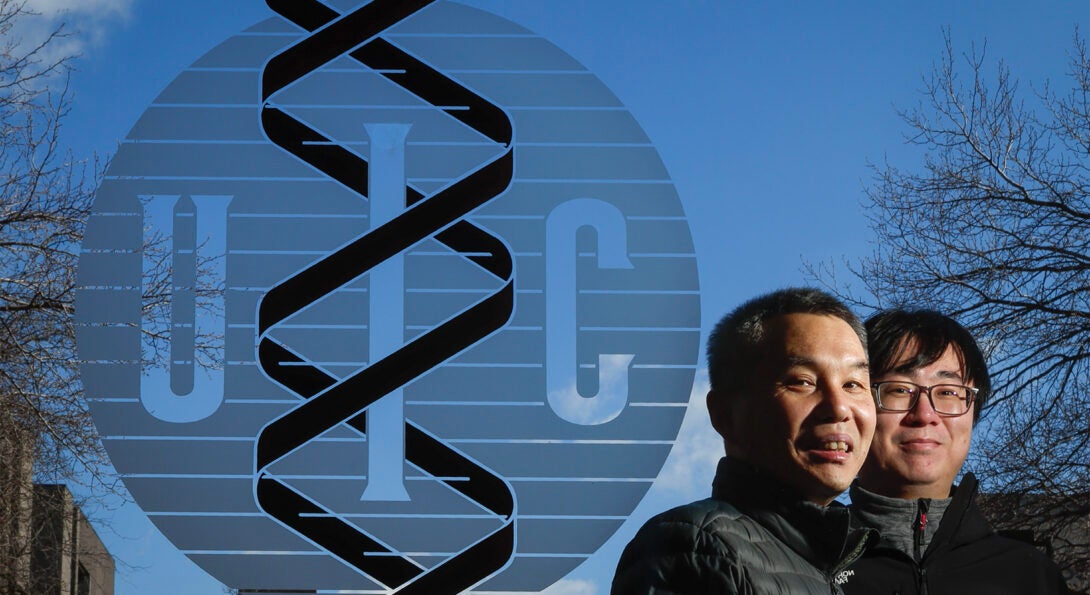Ma lab breakthrough transforms protein simulations

block
Richard and Loan Hill Department of Biomedical Engineering Associate Professor Ao Ma and postdoctoral associate Huiyu Li have achieved a breakthrough in computational biophysics. Their research was recently published in Nature Communications, one of the most prestigious and highly selective journals in science and engineering.
The work introduces a novel computational method that enables efficient predictive sampling of functionally important large-scale protein conformational changes, which solved a decades-long challenge.
The paper, “Enhanced sampling of protein conformational changes via true reaction coordinates from energy relaxation,” was published this winter and unveils a game-changing approach to simulating how proteins transition between different structures—an essential process in biological function, with groundbreaking implications for drug design and enzyme engineering.
Simulations are computational models that help scientists understand and design biological molecules and their interactions. These simulations aim to mimic what happens in nature, however, there are significant limitations.
“Identifying the exact reaction coordinates has been the central challenge in the field since the early 2000s,” Ma said. Traditional molecular dynamics simulations cannot typically capture protein conformational change, spanning milliseconds to hours.
Ma and Li’s novel approach overcomes these fundamental limitations by directly computing these true reaction coordinates from a very fast process called energy relaxation, which only lasts a few picoseconds. relaxation is when a small amount of excess energy is injected into the active side of a protein, triggering systemic motion to dissipate into the environment before the protein energy returns to its equilibrium value.
Ma and Li’s method, the generalized work functional, computes the true reaction coordinates of conformational changes from this energy relaxation process. The generalized work functional method refers to the enhanced sampling that uses external forces to variables to accelerate conformational changes. However, because some of the collective variables are chosen based on an educated guess, if done improperly, it will decrease the protein structure.
“Reaction coordinates allow us to generate natural transition trajectories of large-scale, slow protein conformational changes with unparalleled accuracy and efficiency,” Ma said.
Understanding protein conformational changes is critical for designing next-generation therapeutics.
Li previously identified the reaction coordinates from a molecular dynamics simulation, but within their new research, they can skip that step because, generally, those trajectories are very expensive. It typically can only be done for cases where the time still happens to be faster. However, energy relaxation is always fast, so now it can be a general method that applies to any protein.
“If we understand the ligand binding process, we can design better drugs that can outcompete natural ligands, making them more selective and reducing unintended side effects,” Ma said.
They demonstrated the effectiveness of their method on HIV-1 protease, a key drug target, and PDZ2 domain, a crucial component in cell signaling, confirming the general applicability of this approach—a transformational tool for molecular dynamics in structural biology.
“This unlocks studies once deemed impossible, paving the way for predictive simulations in drug and enzyme design,” Ma said.